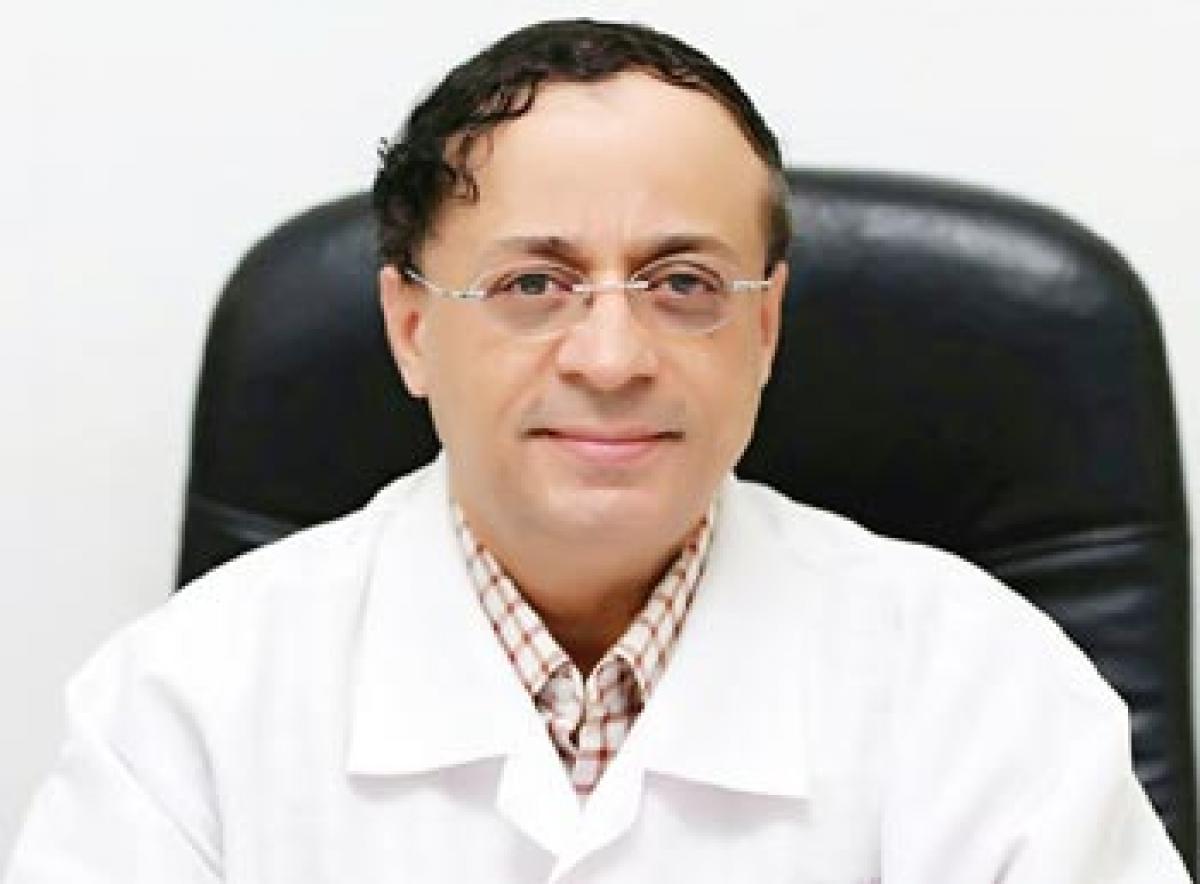Live
- Spiritual fervour marks Karthika Pournami
- Give big nudge to solar power production thru SHGs: Bhatti
- VIT-AP celebrates National Library Week
- Experts flag concern over faulty upkeep of tracks, chinks in infra
- Render services for people’s upliftment
- Safe Stay Audit programme for IT and ITES sector launched
- AP CM Chandrababu meets union ministers in Delhi, to visit Mumbai today
- Ponnam warns against negative propaganda of ongoing survey
- Hyderabad: Enumerators jotting down details with pencil nettles families in city
- First Lokmanthan event in South India to be held in city: Kishan
Just In

Coronary angioplasty is a medical procedure in which a balloon is used to open a blockage in a coronary (heart) artery narrowed by atherosclerosis.
Coronary angioplasty is a medical procedure in which a balloon is used to open a blockage in a coronary (heart) artery narrowed by atherosclerosis.This procedure improves blood flow to the heart. Atherosclerosis is a condition in which a material called plaque builds up on the inner walls of the arteries. This can happen in any artery, including the coronary arteries, which carry oxygen-rich blood to your heart. When atherosclerosis affects the coronary arteries, the condition is called coronary artery disease (CAD).
Angioplasty is a common medical procedure. It may be used to:
Improve blood flow and relieve symptom, such as angina (chest pain or discomfort) and shortness of breath. Reduce damage to the heart muscle from a heart attack. A heart attack occurs when blood flow through a coronary artery is completely blocked. Angioplasty is used during a heart attack to open the blockage and restore blood flow through the artery. Reduce the risk of death due to heart attack.
Angioplasty is done on more than 1 million people a year in the United States. Serious complications don't occur often, but can happen 1per cent of the it, no matter how careful your doctor is, or how well he or she does the procedure. Research on angioplasty is ongoing to make it safer and more effective, to prevent treated arteries from closing again, and to make the procedure an option for more people. Drug coated stents and bio-absorbable material is being used to minimise complications.
Who Needs Coronary Angioplasty?
Coronary angioplasty is used to restore blood flow to the heart when the coronary arteries have become narrowed or blocked due to coronary artery disease (CAD).When medicines and lifestyle changes, such as following a healthy diet, quitting smoking, and getting more physical activity, don't improve your CAD symptoms, your doctor will talk to you about other treatment options. These options include angioplasty and coronary artery bypass grafting (CABG) surgery.
Your doctor will take into account a number of factors when recommending the best procedure for you. These factors include how severe your blockages are and where they're located, and other diseases you may have.
Compared with Bypass Surgery, some advantages of angioplasty are that it:
Has fewer risks than CABG Isn't surgery, so it won't require a large cut Is done with medicines that numb you and help you relax. Unlike CABG, you won't be put to sleep for a short time Has a shorter recovery time Angioplasty also is used as an emergency procedure during a heart attack.
As plaque builds up in the coronary arteries, it can burst, causing a blood clot to form on its surface. If the clot becomes large enough, it can mostly or completely block blood flow to part of the heart muscle.Quickly opening a blockage lessens the damage to the heart during a heart attack and restores blood flow to the heart muscle. Angioplasty can quickly open the artery and is the best approach during a heart attack. Your doctor will discuss with you the treatment options and which procedure is best for you.

© 2024 Hyderabad Media House Limited/The Hans India. All rights reserved. Powered by hocalwire.com







